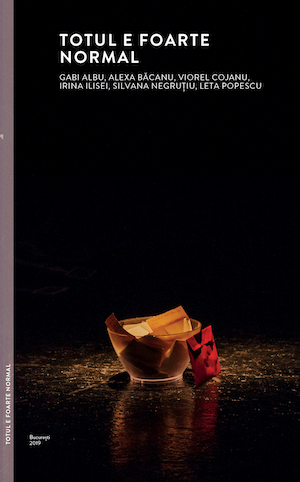
TOTUL E FOARTE NORMAL - scenariu de spectacol
The project "EVERYTHING IS VERY NORMAL - DIALOGUE WITHOUT TABOOS." is organized by the Replika Cultural Association and co-financed by the National Cultural Fund Administration - AFCN.
More...We kindly inform you that, as long as the subject affiliation of our 300.000+ articles is in progress, you might get unsufficient or no results on your third level or second level search. In this case, please broaden your search criteria.

The project "EVERYTHING IS VERY NORMAL - DIALOGUE WITHOUT TABOOS." is organized by the Replika Cultural Association and co-financed by the National Cultural Fund Administration - AFCN.
More...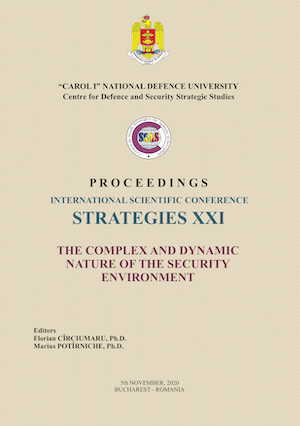
Based on the recent evolutions of international trends, environment and health issues are more than ever interlinked with security and sustainable development. The considerations of international community comprise many debates, initiatives and processes that are key drivers to bring together environment and health in the context of security and sustainable development. I present in the paper the regional process on Environment and Health under the United Nations Economic Commission for Europe, the international negotiations on adopting a resolution on Environment and Health during the Third Session of the United Nations Environment Assembly, the main sensitivities and the interlinkages with sustainable development agenda and security.
More...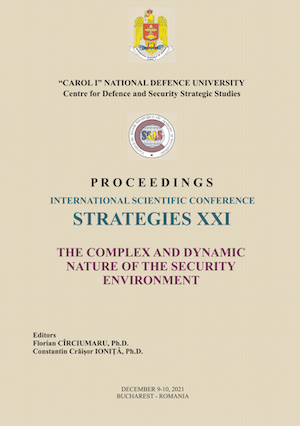
The current security context illustrated by the COVID-19 pandemic shows us that we have vulnerabilities, that there are threats and that there will be risks, including biological ones. In the field of BIO defense, it is almost impossible to experiment at the general level. This can only be done on time in the laboratory, in vitro, in vivo and possibly in silico. The calculation methodology for the effects of possible attack with contagious biological warfare agents has certain assumptions and limitations. Considering that the population is homogeneous it results that the isolated groups, to which the infection it does not spread, will show an overestimation. Possible individual variations, particular diseases and asymptomatic cases are not taken into account so either an underestimation or an overestimation occurs. In the mathematical modeling of the epidemic diseases induced by biological attack with contagious agents can use the SEIRP model: Susceptible, Exposed and Infected, Infectious, Removed and Prophylaxis Efficacious Model. The study is important for medical operational planning.
More...
In the case of attack with CBRN Weapons of Mass Destruction, the use of biological warfare agents is likely to amplify the effect on the living force, in order to infect, lethal or nonlethal, as many enemy as possible. The military medical service must be able to prevent, diagnose, treat and recover all affected military and the civilian population in the area. Healthlosses must be recovered in their entirety. Mathematical modeling of the epidemic induced by biological attack is useful for planning the forces and means of the military medical service, for medical planning the offensive or defensive operation, logistics and human resources needed for medical support and replacement. The estimates resulting from the calculations according to the formulas recommended in the specific NATO documents allow the optimization of the medical and non-medical countermeasures for the liquidation of theconsequences of the biological attack.
More...
One of the major security threats Humankind was confronted with, along several millennia, was coping with deadly viruses. In such a situation, different means of protection of the population have been ensured – medical discoveries, vaccines, and social interaction obstructions. As the creativity of man knows no bounds, different scenarios have emerged regarding combating disease whilst many scientists have designed layouts of coping with deadly viruses, using different models of infections. The goal of this paper is to analyze some of these models, through the lens of Security Studies and Political Science. Then, the discussion will shift towards social interactions and manipulating the social network. Furthermore, we will apply this model on a few selected movies, critically comparing them to the reality we are facing today. Thereby, the focus shall shift towards four well known movies: Contagion (2011), Outbreak (1995), Quarantine (2008), It comes at Night (2017) and their approach to containing and curing viruses, while also quenching the impeding chaos of dismay.
More...
The article is about the attacks on health facilities including hospitals, medical staff and security inside the healthcare institutions. The author first goes on to present a short introduction about the general knowledge concerning the situation of the terrorist assaults on the hospitals and the medical staff. He divides the text into several chapters, which try to comprehend the most important sides of the attacks on healthcare institutions. First, he starts with armed assaults on hospitals and health workers, where he describes the dangers the terrorists pose against the institutions and the personnel in them. Then he goes on to talk about the attacks by radicalized medical staff against their own personnel and patients, which presents a serious problem for the security officers. He continues with attacks by explosions, hostage-taking and cyber attacks on medical facilities. At the end, the author concludes the article by giving some advises for the international community how to resolve these problems.
More...
The development of the IT & C field produces changes in the way of organizing and functioning of all civilian organizations as well as for those in the military field. The way of managing information in electronic format is a concern of specialists in both military and civilian fields in terms of optimizing the process of managing information in electronic format due to the large volume of files and documents currently operated.
More...
Given the major shift in perception, communication and identity triggered by the pandemic over the last two years, the use of digital tools to guide patterns of association, mobilization and action seems more powerful than ever. Although Fake News has been making headlines since the early days of globalization, its later developments revealed interesting conjectures on topics such as the rise of non-state hegemons, the ascent of digital diasporas, deterritorialization, or post-politics. In this context, the distances between fake news and reality tend to be blurred by the intervention of interpretive bias, while the role of public’s beliefs, latent iconography and power mythology becomes more critical. Following this argument, the paper looks at some of the emerging trends in fake news and master narratives in digital media, also tackling the implications triggered by their potential use in the context of hybrid confrontation.
More...
International environment becomes increasingly competitive and conflict prone. The present paper argues that political values subsumed to liberal democracy are an important component of the current global struggle for power and its purpose is to emphasize and argue the major importance of value-based cohesion for Euro-Atlantic actors, as well as the main challenges in this respect. In order to do so, the analysis is framed within the theories of power transition and security community as, together, they reflect both the manner in which values can act as a motivation for conflict and their function as a bond making the members of a security community able to pursue their interest in a conflicting international environment.
More...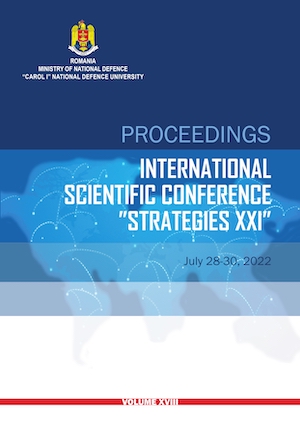
The Covid-19 pandemic has hit the international community, causing a terrible shock among people everywhere. An invisible enemy that has spread all over the globe and left behind death and suffering, lockdown, unemployment, weakened national economies, a whole new depressing and frightening reality. Were there any other pandemics? Could this pandemic have been better managed? Has this threat been identified in national security strategies? Did the states act separately or unitarily? After almost two years, were there lessons learned? I reviewed the US national security strategies from 1987 to 2021 in order to see if the pandemics were mentioned as threats to the security of the American people. Then I did the same with Romania's last two security strategies. I looked for documents that showed the interest of states for the consequences of a pandemic similar with the one in 1918, which would show that pandemics were perceived as security threats before theCovid-19 pandemic broke out. I also looked for concrete actions of the states for the management of a pandemic, pandemic preparedness plans. I also highlighted the challenges states were facing following the outbreak of theCovid-19 pandemic in the medical field and in the economy. Although the management of the pandemic was initially a race against the clock, each country trying to cope with the large number of people hospitalized and lacking medical equipment, it later became clear that cooperation between states and organizations and mutual aid is the solution to get out faster from this health crisis.
More...
Entertainment is a particular area of public communication, due to the aesthetic component of the messages. Artistic expression is primarily about emotionality, not rationality, and the originality of creation gives artistic value. Entertainment nowadays tends to contaminate the other functions of communication, namely information and persuasion. In contemporary society, the production of entertainment is industrialized. Contemporary culture is dominated by entertainment industry, especially in the fields of publishing, music, film and games. In this article, we shall summarize the content and specifics of entertainment as premises of the creative industries’ social impact.
More...
COVID-19 pandemic affected millions of people worldwide and challenged the ability of national and international institutions to help suffering people and prevent others from being infected. From a theoretical point of view, this pandemic was framed as a human security crisis by officials of the United Nations, politicians, and researchers because it had a severe impact on human lives as a result of posing a threat to their health. The centrality of human beings for the concept of human security allowed the COVID-19 pandemic to be connected to human security and thus to be subjected to the process of securitization. A further aspect that significantly contributed to establishing this correlation was the fact that pandemic had been included in the concept of human security since it gained prominence back in 1994, becoming one of its characteristic constituents. Understanding how COVID-19 pandemic had been associated with human security and what made possible for them to be related contributes to explaining the present relevancy of human security, helps clarifying the theoretical basis of its application to this pandemic, facilitates the framing of potential future pandemics as a threat to human security and improves the use of this theoretical outlook in relation with pandemics.
More...
Over the course of history, the decision-making process was at stake for many military commanders and their ability to act in critical situations. All historical events occurred as a result of powerful people making either a beneficial or detrimental decision. Therefore, the first part of the paper will be focused on the importance and the main elements of the decision-making process. Furthermore, the complexities of this process will be displayed along with the limitations that can influence the decision-maker. Also, the approach that a leader might choose affects the outcome of a specific situation. In the second part, attention will be directed at intuition as a favorable attribute for the leaders of the armed forces and how it can be taught in order to achieve the intuitive judgement necessary in the military. This paper’s goal is to analyze the effectiveness of using intuition in the military decision-making process rather than the rational evaluation that has been used and taught for years. Because military circumstances are so fluid these days, the decision-making process is hampered by a dangerous tempo of action, disordered intelligence, and agitated activity rather than a basic,easy-to-implement approach. In such situations, decision-making is rarely clear and objectively rational but rather intuitive.
More...
In this paper, I want to present the value that the human resources department brings to the organization of which it is part. It consists in its ability to fulfil its role of activating the development of human capital and its sustainability. Long-term performance and market leadership could not be achieved by organizations without motivated, hard-working employees and a strong sense of loyalty to the employer. Throughout the process that employees go through since joining the organization, the human resources module needs to be aware of the importance of actively implementing performance management tools in order to monitor key activities. In order for performance management to function optimally in a department, the objectives and functions to be performed by this team must be identified in accordance with the organization's strategy. Then, the most representative and relevant key performance indicators are chosen for the mutually agreed objectives. And in the second part of the paper, I will present a case study of the application of these key performance indicators on the units of the Romanian Army.
More...
The concept of cognitive warfare is steadily gaining more and more attention in security and defense discourse. By employing a cognitive psychology perspective, the article is examining how perception and/or misperception factor into cognitive mapping of strategic and operational concepts. The central aim of the paper is to outline that the approach to the human domain is deeply rooted in nationally conditioned perception. The article is looking to achieve this academic goal by comparing the NATO conceptualization of cognitive warfare to the Russian Federations'. The structure is as follows: first, there is a brief review of the cognitive psychology paradigm, especially key concepts as they relate to the scope of the paper. The subsequent sections compare the NATO cognitive warfare approach to the opposing view, namely the one of the Russian security and defense apparatuses. The "special military operation" in Ukraine initiated by the Kremlin in 2022 confirmed that in the event of a territorial aggression against a NATO member state, the alliance as a whole remains the basis of European security and defense posture. It is for this very reason that the alliance ought to objectively analyze how Russian decision makers perceive Western perspective in the cognitive realm.
More...
IoT, big data analytics, and machine learning advancements have made the concept of a smart city a reality. The goal of a smart city, as we all know, is to give efficient answers to its residents using modern technology and data analytics collected by sensors. The idea of a smart city was something SF for many people in the 20th century, that was anyway pictured just in the popular media. Cities are becoming smarter not just in terms of how we can automate regular operations for individual people, buildings, and traffic systems, but also in terms of how we can monitor, comprehend, analyze, and design the city in real time to increase efficiency, equity, and quality of life for its population. A smart city goes beyond utilizing digital technology to improve resource efficiency and reduce pollution. It entails improved urban transportation networks, updated water and waste disposal facilities, and more energy-efficient lighting and heating systems. It also entails a more involved and responsive local government, safer public areas, and addressing the needs of older people. In this paper we will approach the actual smart city, what is it today; how they developed in recent years, the domains where is implemented (traffic management, healthcare, and public safety for example) and the future of smart cities in the whole world.
More...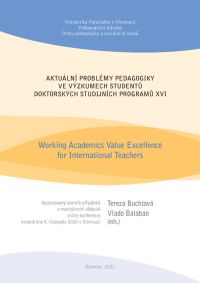
In connection with the high autonomy of Czech schools, higher demands are placed on their headmasters than in other OECD countries. It is necessary to look for ways to link their theoretical training with practice in an authentic school environment. The aim of the paper is to identify and analyze the key working activities of the headmaster of the secondary school. A pilot survey was conducted in the form of an in-depth interview with a selected headmaster. Research question: What are the key activities of the headmaster? The results of the pilot investigation are findings of specific key work activities of the headmaster of the secondary school.
More...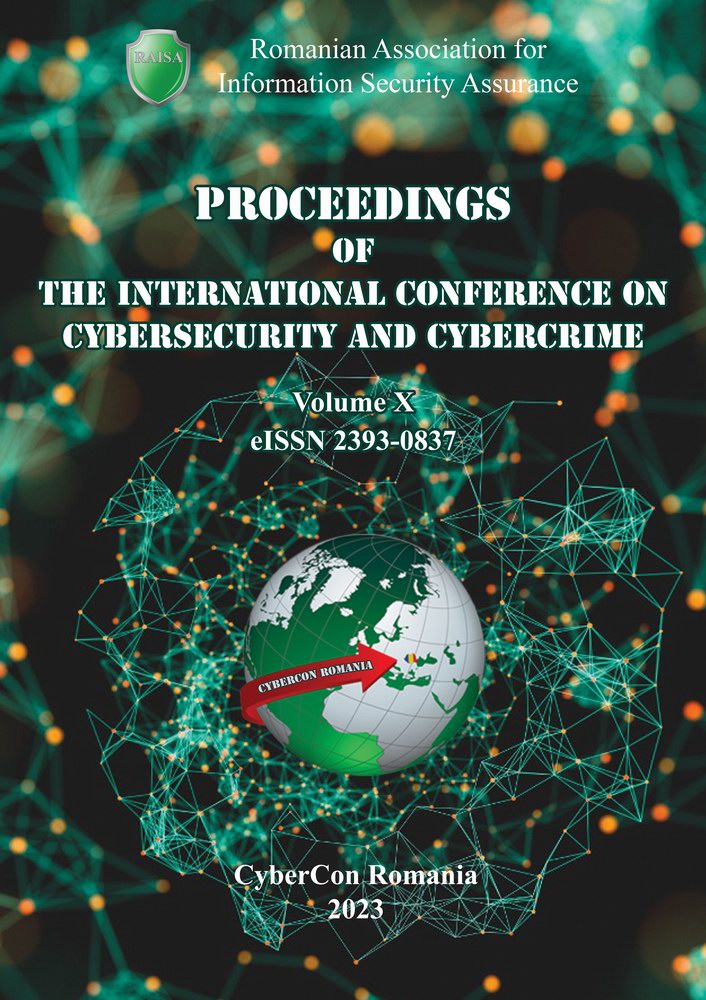
With security incidents and breaches growing each year, email is still used as the major entry point to server malicious content that results in credential theft or malware infections enabling malicious threat actors to mount complex attacks. This paper is intended to document a new approach for detecting suspicious and malicious emails leveraging techniques such as security analytics, natural language processing to discover the intent of the email, as well as artificial neural networks to support more complex rules for classification. This solution can be used in a basic mode to flag which emails are safe and which are not, at the same time it can also be used by security analysts to gain a better understanding of the attack vectors and speed up the investigation process.
More...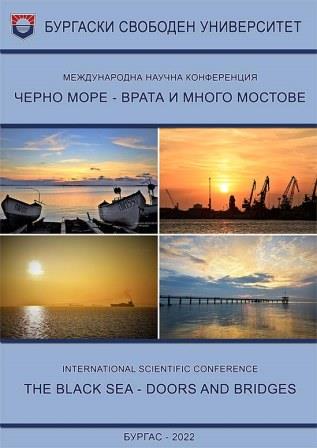
Flipped classroom method is a pedagogical approach in which the traditional concept of classroom-based learning process changes, students are already familiar with the teaching material before the lesson, so they can spend classroom time by activities and tasks facilitated and managed by the lecturer. The study presents the principles of the flipped classroom method and also its practical steps and methodological possibilities. In addition - by the presenting good practices and inspiring examples - it describes possibilities and experiences of the university implementation of the method.
More...
Flipped classroom method is a pedagogical approach in which the traditional concept of classroom-based learning process changes, students are already familiar with the teaching material before the lesson, so they can spend classroom time by activities and tasks facilitated and managed by the lecturer. The aim of the study is to present the results of a questionnaire survey mapping the application of the flipped classroom method in university education in Slovakia. The questions of the questionnaire used in the research on the one hand research to what extent the flipped classroom method is known and applied in the practice of university education, and on the other hand to find out what the experiences and feedback of the lecturers during the implementation of the method.
More...